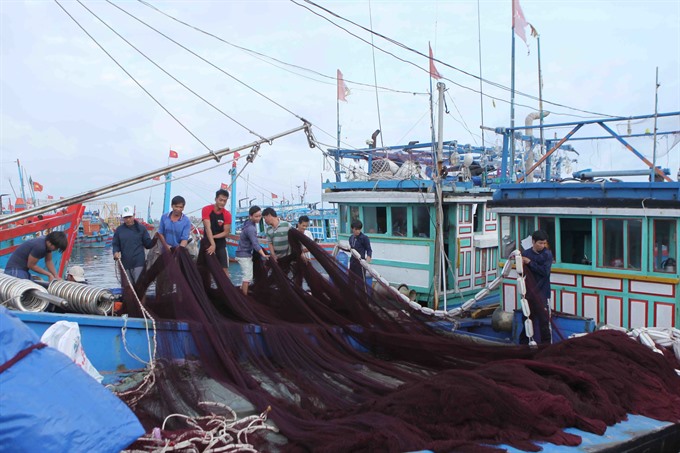 Society
Society

The development of green economic models on islands could help ensure sustainable residency and livelihoods, an expert has suggested.
 |
| Fishermen of An Hải Commune in Lý Sơn Island District in the central province of Quảng Ngãi prepare for a fishing trip. Fishing is akey industry in many island communes in Việt Nam. — VNA/VNS Photo Quý Trung |
HÀ NỘI — The development of green economic models on islands could help ensure sustainable residency and livelihoods, an expert has suggested.
Dr Lê Xuân Sinh from Hải Phòng-based Institute of Marine Environment and Resources said that green economies helped improve living standards and social equality as well as reducing environmental risks and ecological deficiencies.
Dr Sinh said that people living on islands often faced disadvantages in economic conditions, healthcare, education and other public services.
He said economic activities were usually spontaneous and did not follow any sustainable models. This resulted in poor quality of living standards or islanders were vulnerable to risks of natural disasters and diseases.
“The disadvantages are why there is migration to the mainland. Islands often cannot attract people to live there,” Sinh said.
“Once green economic models are implemented, islanders could better their livelihood and their resilience to climate-change impacts," Dr Sinh said.
"Or at least, they could manage by themselves for a time if the islands are isolated because of natural disasters,” Sinh said.
He said that it was necessary to develop green economy models accompanied by green production and services. Environmental conservation and protection would also ensure bio-diversity in order to have sustainable development.
In addition, aquaculture production must use advanced environmentally friendly technologies while eco-tourism should be made a key industry.
For example, Việt Hải Island Commune on the east of Cát Hải Island District, is the third largest island in Việt Nam. There are 88 families or 270 people living on the island, but there is no market. Agricultural production is small and spontaneous, unable to provide enough food for islanders. Most of the food is from the mainland.
Sinh said that the island commune should concentrate on community tourism or home-stay accommodation to take advantage of its location in Cát Bà Nature Reserve. Organic agriculture was another option.
Meanwhile, he said Nhơn Châu Island Commune in the central province of Bình Thuận should take advantages of its beautiful beaches. Eco tourism with sight seeing, diving and fishing would attract visitors. High-tech agriculture should be applied to provide enough food to islanders and visitors as 90 per cent of soil on the island is unproductive.
According to the Ministry of Natural Resources and Environment, Việt Nam has more than 3,000 islands and islets with a total area of about 1,700 sq.km. Of those, three islands have more than 100 sq.km each, including Phú Quốc Island in southern Kiên Giang Province, Cái Bầu Island in Quảng Ninh Province and Cát Bà Island in Hải Phòng City. Twenty three islands have an area of 10 sq.km, 82 islands have 1 sq.km each. About 1,400 islets have not been named.
Groups of islands are said to have potential to become marine economic hubs and logistic centres for on-sea activities, including fishing or tourism. The islands together can create strategic areas to boost socio-economic development, ensure national defence and security.
Island economies could become “pillars for development” spreading development to surrounding areas. In addition to values of landscapes, the marine resources around the islands are crucial to fishing industry and sea tourism.
While more than 200 islands and islets in the country are said to be livable, just 66 have residential areas with populations in 2010 of about 240,000 people.
There are another 2,800 islands and islets unsuitable for human daily life or production. — VNS




